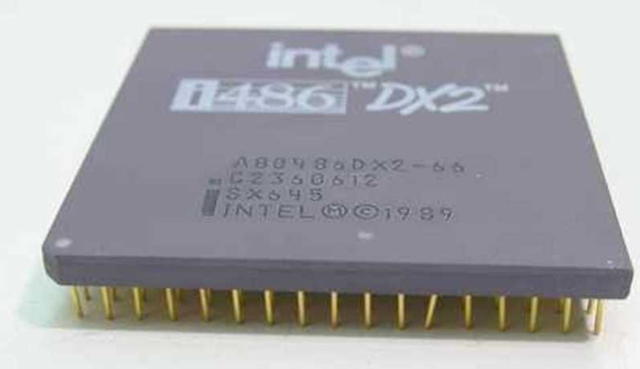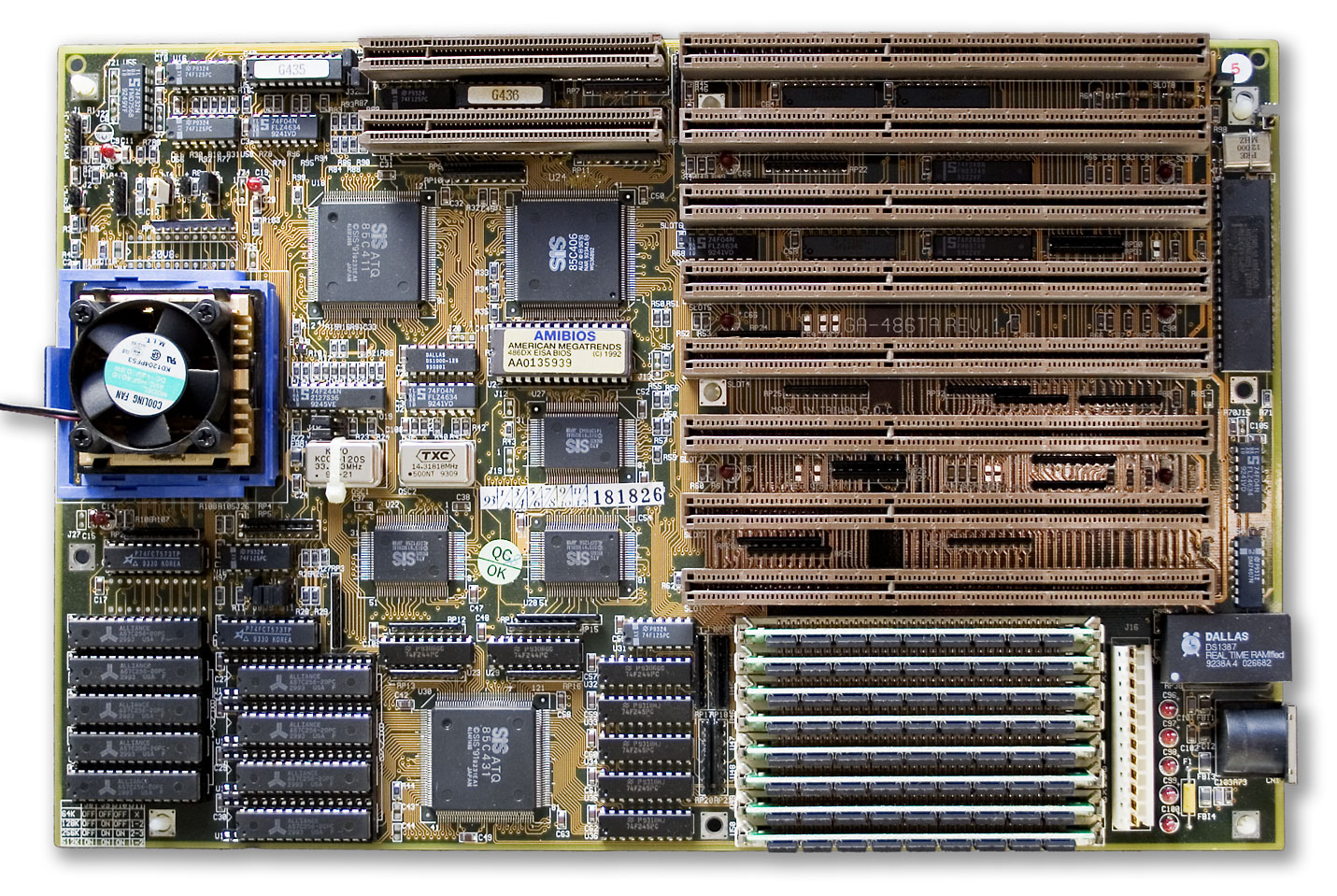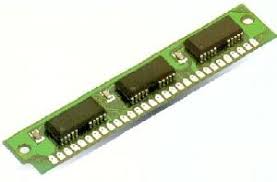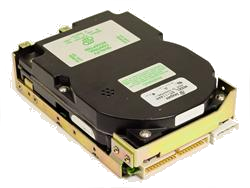 Typical PCs Each Year
Typical PCs Each Year
CPUs
1991 saw the introduction of the Intel 80486SX processor which retained the 32-bit external bus interface of the DX but omitted the integrated floating-point unit.
In April 1991, Intel first announced they were planning to introduce a 25 MHz 80486 that ran internally at 50 MHz. This was their first foray into 'clock-doubling', and would likely benefit existing OEMs who were pushing 25 MHz 486 machines to not require new FCC approval if they used the new chip since it would be a 'drop-in' replacement with no other motherboard changes necessary. Despite this announcement, it wouldn't be until 1992 that we first saw these CPUs actually ship in PCs.

In late 1991, AMD announced the first low-voltage 386 CPUs that ran at 3.3V. Designed for the portable computer market, these would allow laptops to reach 9 hours of battery life, roughly double what the norm was. The first of these was the Am386SXLV (a 386SX) and the Am386DXLV (a 386DX).
Motherboards
 The EISA bus was the premium option in 1991, and a good number of the larger PC system builders got behind it. Touting performance that rivalled RISC-based minicomputers, the new 32-bit bus meant you could maximize the performance of Intel's 486 CPU. The cost of a high-end EISA-based PC compared to standard ISA? Approximately $2,500 - $3,000 more.
The EISA bus was the premium option in 1991, and a good number of the larger PC system builders got behind it. Touting performance that rivalled RISC-based minicomputers, the new 32-bit bus meant you could maximize the performance of Intel's 486 CPU. The cost of a high-end EISA-based PC compared to standard ISA? Approximately $2,500 - $3,000 more.
Faster [and more expensive] 386DX-based motherboards would come with a 32 KB or 64 KB cache, and advertisements from OEM system builders often had separate PC offerings for these cached 386 systems compared to their lower-priced non-cached systems. This cache was often referred to as a 'RAM cache', since what we would later call the Level 2 or L2 cache was just that - a faster, quicker type of RAM (static RAM, or SRAM) for the CPU to access frequently-used instructions. For 386 motherboards, you would only find a 32 KB or 64 KB cache alongside 20 MHz or faster 386 CPUs. On 486 systems, this external cache was typically 128 KB in size, working alongside a 486SX-25 or -33 CPU.
You could buy motherboards separately, with 386SX-16 boards and a CPU selling for $215. A 386SX-20 was $395, 386DX-25 was $415, and 386DX-33 was $495. At the top-end, you could have a 486DX-25 board with CPU and 64 KB cache for $975 or the 33 MHz option for $1,075. To move into EISA territory, a 486DX-33 mobo with CPU and no cache cost a whopping $1,795.
Memory
 SIMM cards ranging from 256 KB to 4 MB could be bought as an easy slot-in upgrade to your PC. Prices in 1991 were about $20 to $40 for a single 256 KB stick, depending on speed ($20 for 120ns, $40 for the fastest 60ns). 1 MB sticks went for $55 (120ns) to $74 (60ns), while a 4 MB stick would cost $300 for an 80ns version or $320 for a 60ns version.
SIMM cards ranging from 256 KB to 4 MB could be bought as an easy slot-in upgrade to your PC. Prices in 1991 were about $20 to $40 for a single 256 KB stick, depending on speed ($20 for 120ns, $40 for the fastest 60ns). 1 MB sticks went for $55 (120ns) to $74 (60ns), while a 4 MB stick would cost $300 for an 80ns version or $320 for a 60ns version.
Memory upgrade boards for laptops were also common, but due to their non-standard interface that each manufacturer chose, prices were a bit higher than for standard SIMMs used in desktop PCs. Typical prices were around $50 for 512 KB, $100 for 1 MB, $200 for 2 MB, and $500+ for 4 MB.
The older DRAM chips used by XTs and some earlier 286s were also sold in PC magazines, and could be bought individually.
Hard Disk Drives
 IDE hard disks were the standard in 1991, though you could still buy the older MFM and RLL drives. The same old manufacturers were in play this year, with Seagate, Miniscribe, Conner, Maxtor and Micropolis being the largest.
IDE hard disks were the standard in 1991, though you could still buy the older MFM and RLL drives. The same old manufacturers were in play this year, with Seagate, Miniscribe, Conner, Maxtor and Micropolis being the largest.
For MFM hard disks, the cheapest was a 10 MB Microscience 612, costing just $69, and a 20 MB one for $99. A Miniscribe 71 MB MFM hard disk with 20ms access time was $349, and you would pay about $30 for a hard disk controller card for it. Here are some more retail prices from April:
| MFM | RLL |
|---|---|
| Seagate ST225 (20 MB 5.25" 65ms): $199 Seagate ST251-1 (42 MB 5.25" 28ms): $249 Seagate ST4096 (80 MB 5.25" 28ms): $549 |
Seagate ST238R (30 MB 5.25" 65ms): $219 Seagate ST277R-1 (65 MB 5.25" 28ms): $339 Seagate ST4144 (120 MB 5.25" 28ms): $649 |
| IDE | SCSI / ESDI |
|---|---|
| Seagate ST157A (45 MB 3.5" 28ms): $229 Seagate ST1102A (89 MB 3.5" 19ms): $389 Seagate ST1144A (125 MB 3.5" 19ms): $489 Seagate ST1239A (210 MB 3.5" 15ms): $799 Seagate ST2383A (338 MB 3.5" 16ms): $1,279 |
Seagate ST296N (85 MB SCSI 28ms): $299 Seagate ST1096N (84 MB SCSI 24ms): $349 Miniscribe 3180E (154 MB 5.25" ESDI 18ms): $499 |
For anyone just getting into hard disks with a very low budget you could pick up a 10 MB 80ms hard disk for $69 or a 20 MB 40ms one for $99. By the end of the year, hard disk prices had fallen with prices 20-30% cheaper than the above.
Graphics Cards
In early 1991, a host of 1 MB Super VGA cards capable of supporting 1024 x 768 in 256 colours came onto the market, including the Diamond SpeedSTAR VGA, Everex Viewpoint VRAM, Orchid ProDesigner II, STB Powergraph ERGO-VGA, Trident Impact III, Video Seven VRAM II and Sigma Designs VGA Legend. Being able to drive a monitor "flicker-free" at this resolution was key, especially in Windows 3.0 and AutoCAD 11, with the Diamond, Everex and STB cards capable of this at 72 Hz refresh rate. The Everex was even capable of 1280 x 768 in 16 colours.
All of these cards made use of the popular Tseng Labs ET4000AX chipset, with only the Trident and Video Seven cards using competing chipsets.
At the cheapest end of the graphics card market, you could pick up a Hercules-compatible monochrome card for $29 or an EGA card for $69. The cheapest 1024x768-capable VGA cards with 256 KB of video RAM would cost $99.
Monitors
A Sony 1304HG 14" non-interlaced monitor cost $567.
Samsung's SyncMaster range were very popular if you could afford it (or got one when buying a high-end PC). The SyncMaster 2 14" cost $287, SyncMaster 3 14" was $329 and the 17" SyncMaster 4 cost $859. For CAD use, you could opt for the Hitachi 2085M+20" at $1,649 or even the 21" Hitachi 2187 at $2,283.
Software
Borland launched the long-awaited Windows version of their Paradox relational database, and Microsoft came out with Word for Windows which competed in the professional word processing market against Ami Pro 1.2b, WordStar 6.0 and WordPerfect 5.1. In October 1991, Word for Windows 2.0 debuted at the Fall Comdex show, and retailed for $495. It was the first to feature Windows' Object Linking and Embedding (OLE) which allowed drag & drop capability between applications.
Anti-Virus software on both DOS and Windows was prevalent in 1991, with Central Point AntiVirus and The Norton AntiVirus products competing head-to-head.
On the operating system front, DOS still had the biggest market share of day-to-day use, but business applications were being moved to Windows 3.0 at a fast rate - Microsoft had sold over 5 million copies of Windows 3.0 by the end of 1991, holding almost a 10% market share on the installed base of PCs. Digital Research's DR DOS 5.0 was launched, as was MS-DOS 5.0. According to Microsoft's adverts at the time, the latter added online help, a Windows-like file manager, more memory for applications and the ability to load multiple applications. Available as a full product or as an "upgrade kit"
Desktop PCs
A broad range of desktop PCs were available in 1991. A typical desktop PC would be a 486SX-25 with 2 MB of RAM and a VGA monochrome or colour monitor. A choice of 1.2 MB or 1.44 MB floppy disk drive and up to 200 MB internal hard disk. They were usually bundled with both DOS and Windows 3.0 along with a serial mouse.
At the low end were branded 286-12 systems with 1 MB of RAM, a 40 MB hard disk and 14" colour VGA display at the $1,500 price point. Budget no-name 286-12 PCs with Hercules-compatible monochrome graphics would be as low as $600 retail.
The biggest brands were Dell, Everex, Mitac, ALR, Hewlett-Packard, Acer and AST.
Moving up to the large mid-market meant you were in 386 territory. A cheap 386SX-based PC would have 4 MB of RAM and come bundled with Windows 3.0 in addition to DOS 3.3 or 4.01. With the same colour VGA as the 286 mentioned, this pushed the price tag up to $1,900. To get a 386DX-based computer would add a further $400-$600 for the same spec PC, though you would also get an 80 MB hard disk.
For those with deep pockets, 486SX-25 and -33 PCs would retail for around $4,000 - $4,500 from named brands, but with these higher-end offerings IDE hard disks of up to 200 MB were standard, along with a 1 MB SVGA card which meant you could potentially run Windows 3.0 at 1280x1024 resolution in 16 colours, or at 1024x768 in 256 colours. No-name PCs with similar specs would be much lower at around $2,400.
Laptops
Smaller, "notebook"-sized laptops started arriving in 1991. These were typically based around the 386SX processor running at 16 or 20 MHz, and came with a mono VGA LCD display capable of 640 x 480 in 16 shades of grey. These notebooks would weigh in at around 6.5 to 7 lbs, making them very transportable compared to standard full-sized laptops. Don't expect great battery life, however - around 2.5 hours from a full charge was pretty good in 1991! Prices varied but expect to pay $2,200 to $3,000 for one of these.
In April, Toshiba launched the T2000SX notebook, which had a 386SX processor, VGA-compatible "supertwist" LCD display and up to 40 MB of hard drive storage. It also offered a 90-minute full recharge of its Nickel-Hydride battery. You could easily upgrade the laptop from its standard 1 MB to 8 MB of RAM by inserting a small 'memory card'. One thing that made the T2000SX unique was its new "AutoResume" feature, which as it sounds meant you could close the laptop and reopen with no fresh reboot and reloading of your programs and files necessary - you could just pick up where you left off.
In October, Toshiba announced the T3300SX, a 486SX-25 portable with 2 MB of RAM, 64K cache, an 85 MB hard disk, and a 9.5" VGA-compatible gas plasma display capable of 640 x 480 resolution. Accessories included the DeskStation IV docking bay. The laptop's case was made out of Toshiba's new Carbon Fibre Reinforced Plastic which allowed for greater strength with less weight, resulting in it tipping the scale at just 5.9 lbs. Using a nickel-hydride battery meant a typical battery life of 3.5 to 4 hours (22% longer life than nickel-cadmium batteries). In its base configuration the suggested retail price was $5,299. An enhanced version of this was the T4400SX, also launched in late 1991, which could be upgraded to a 486DX-25 and RAM expandable to 10 MB. It retailed for $5,899.
At the Fall Comdex show in 1991, Epson announced the world's first battery-powered active-matrix colour notebook computer.
Printers
Mannesmann Tally introduced its first colour inkjet printer capable of printing 11-by-17 sheets at Fall Comdex in October - the MT92C offered 300 dots-per-inch resolution in both colour and monochrome. The colour printer used four 50-nozzle heads (cyan, magenta, yellow and black) to print in up to 4096 colours. It retailed for $2,995. It also unveiled their HP Laserjet III-compatible printer with RISC processing - the MT908 was able to print up to 8 pages per minute and ran an Intel 80960 32-bit RISC processor running at 16 MHz. With this chip the printer claimed to be able to process fonts and graphics 2.5 times faster than the Laserjet III. It cost $1,995 and came with 1 MB of RAM (expandable to 5 MB).
Portable printers were becoming more important due to the rise in laptop sales. Star Micronics launched the StarJet SJ-48, a 4lb portable inkjet printer with 64 nozzle print head capable of producing 360 dot-per-inch graphics. It came with 13 scalable fonts that were downloaded from the computer. It had 24 KB of built-in memory and four bit-mapped fonts built into the printer itself, and had a printing speed of around 6.5 pages per minute when used in 20-character-per-inch mode. It retailed for $499, and an automatic sheet feeder would at $90 and an extra battery pack $50. Star claimed a single battery could print up to 40 pages.
Toshiba also entered the portable printer market with the ExpressWriter 201. This was a 24-dot thermal printer, weighed less than 2lbs, and offered 180-by-180 dot-per-inch resolution. It retailed for $499.